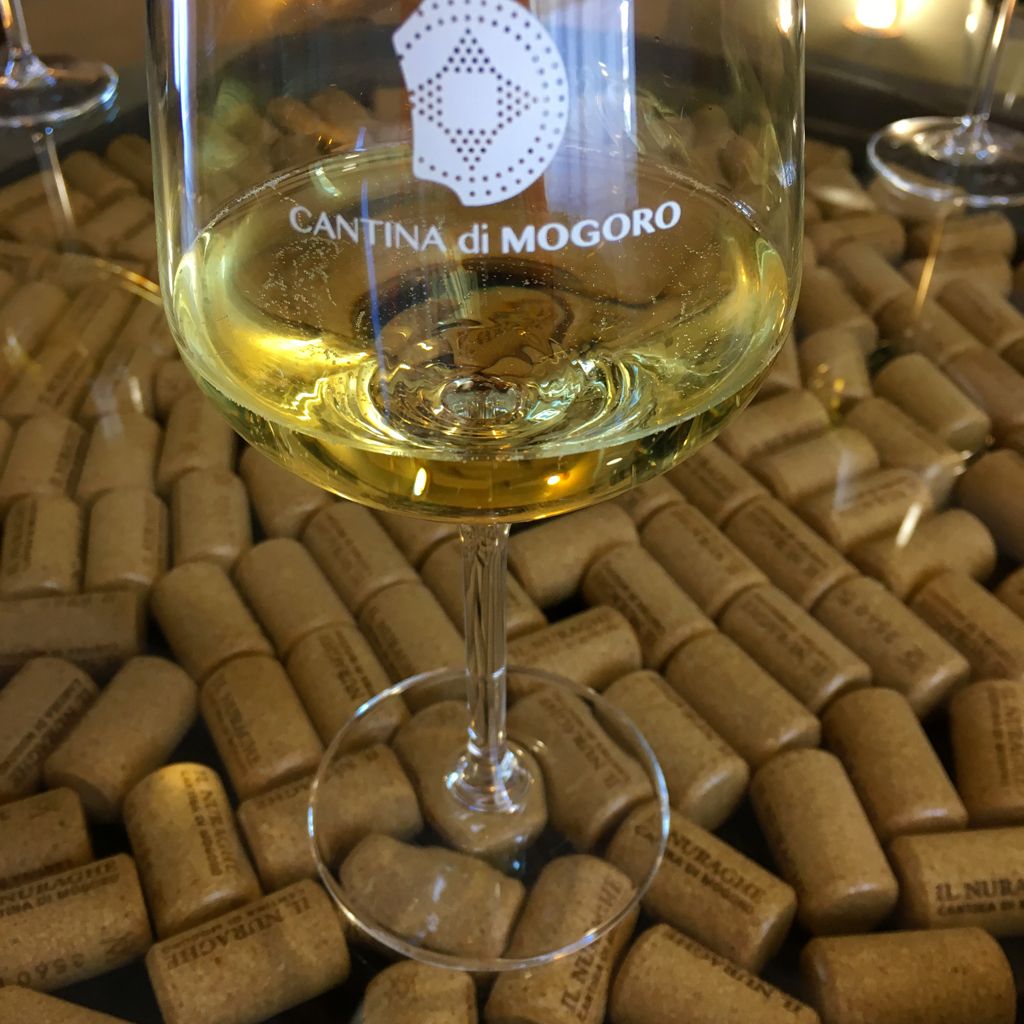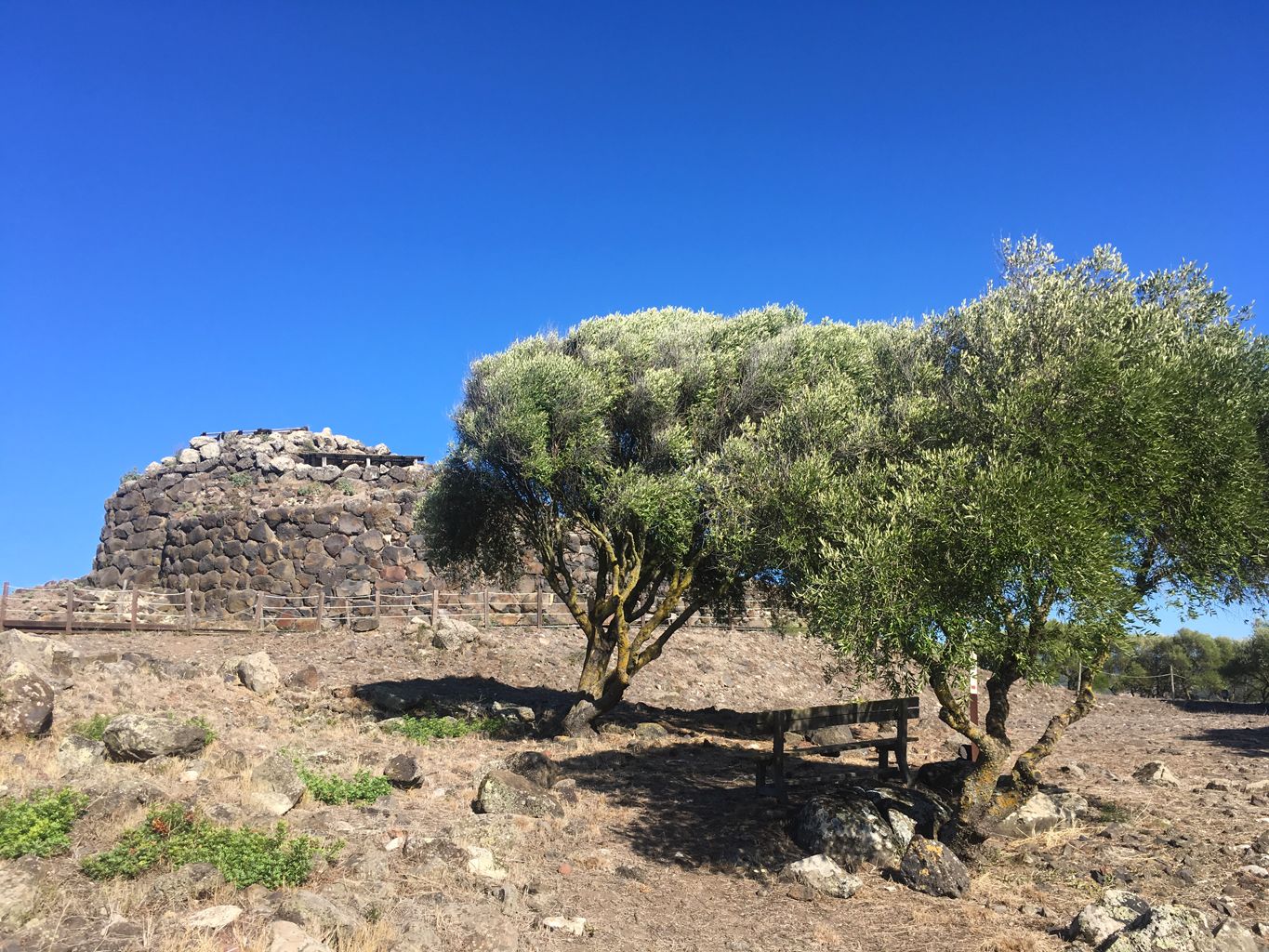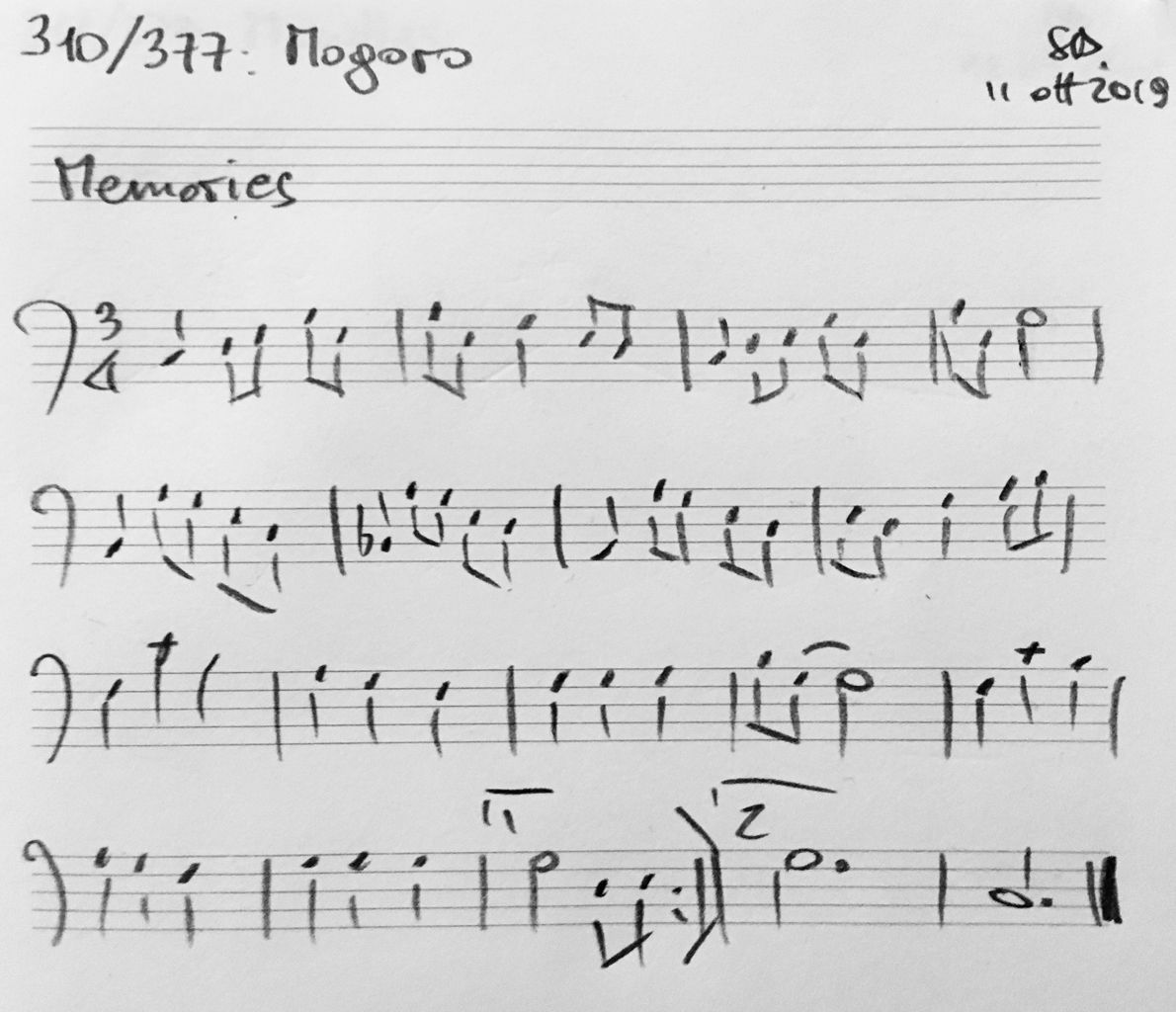
310/377: Mogoro
INSPIRATION

Despite my daily efforts in finding sponsors (as well as cycling, visiting places, meeting people, and keeping this blog), some municipalities (very few to tell the truth) managed to make a small financial contribution towards my project, and Mogoro is one of these, through its Pro Loco.
Arriving at the Town Hall, on a warm and sunny day, I was greeted by the Deputy Mayor and Councilor for Social Policies Donato and by the social worker Sabina. I am given two books, “Glimpses of Life Lived” which contains the memories of the elderly of the Social Aggregation Center, and a beautiful illustrated volume on the Rio Mogoro and the history of the construction of the artificial dam in Santa Lucia.
In the gardens outside the Town Hall, Donato and Sabina show me what there is to see in Mogoro, reminding me that unfortunately the Artistic Craft Fair is closed in this period. But on the other hand, the women of the Su Trobasciu Artisan Cooperative are waiting for me.

Mogoro is one of the few important weaving centers in Sardinia. This tradition, which is now disappearing, was practiced here by all women for the production of marriage kits and tapestries. Today Wilda welcomes me and guides me to discover the textile workshop, where a group of only women carry on this ancient tradition.
On new and old looms, with strictly natural fibers (wool, cotton, linen, silk) tapestries and carpets are produced. I recognize the “a pibiones” technique that I have already seen in other workshops, but I particularly admire the one used for tapestries, where golden and silver threads create fascinating floral and various animal designs.

After greeting Wilda, I head towards the centre of the town where I meet Angelica of the Mariposas De Sardinia, an association of all female friends, Laura, Viola, Silvia and Angelica, that deals with the promotion of this territory by organising events and trips in the Marmilla area and beyond.
Walking through the streets of the town, full of ancient houses with beautiful wooden portals, we come across a series of murals, such as a bearded man by Andrea Casciu, muralist from Siris, and a large mural by the local artist Alberto Mandis dedicated to the Mogoro-born from 1979 (which also depicts the historic Pink Floyd album The Wall, from 1979).

We also admire the photographic panels scattered here and there for various walls of the town. They are part of the exhibition of the BìFoto photography festival created in 2011 by Stefano Pia. Over the years the festival has grown to include musical events, book presentations and training sessions.
Mogoro is an example of how much culture can be promoted in the territory. I am thinking of the Pedras et Sonus Festival created by the local clarinetist Zoe Pia, or the important events held here as part of the Culture Festival by the Sanluri-born Simone Pittau. Events to be truly proud of.

With Angelica we end the morning at the historic Cantina di Mogoro winery where the marketing manager Gianluigi welcomes us to let us visit this important reality. After a journey that takes us between modern silos, ancient wooden barrels and historical reserve bottles, we relax at the wine bar with an excellent quality sparkling wine as an aperitif.

In the afternoon I visit the most important archaeological site in the area, the Nuraghe Cuccurada. Alessandro from the cooperative that manages the site guides me. This nuraghe, clearly visible every time you take the 131, perched on the edge of a hill overlooking the Cantina di Morogo, is built on an ancient protonuraghe. Around the central tower there is a courtyard where you can see the remains of other towers and around the huts.
We walk inside the courtyard and climb the remains of the central tower from where I admire the whole Campidano plain. Then we walk outside the nuraghe along a megalithic wall of an age prior to the nuraghe near which there is also a megalithic hut. Once again, in a single site, we can find an impressive complexity and an overlapping of cultures over the centuries.

Back in the village, I end the day with a nice walk that takes me to three churches. In the center is the late Romanesque Parish church of San Bernardino da Siena with Baroque elements. I enter to admire a relic kept here, of the Eucharistic miracle of 1604. Two hosts eaten by two sinners first burned their tongues then, when they fell to the ground, they left indelible imprints on the stone, now preserved in the reliquary.
Leaving here I meet the church of Carmine, built at the beginning of the 14th century, with Romanesque-Gothic forms, which belonged to the Carmelite convent until 1855. And finally I arrive at the small church of Sant’Antioco, on a hill which can be accessed by a beautiful staircase. The pale stone and basalt glow at sunset, leaving a beautiful memory of this day.
SOUND FRAGMENTS
Memories.

SARDINIAN SHORT STORIES
Before lunch Angelica and I went to the Su Nuraxi area, in the town and so called due to the presumed presence of a nuraghe, where Sebastiano Dessanay street is located, named after my grandfather. In this trip I often find “nodal” places that are intertwined with the history of my family, and Mogoro is one of them.
Grandfather Bustianu was born in Terralba in 1903, and knowing the history of this territory, and of the fearsome Rio Mogoro that once flowed into the Sassu pond, I can almost visualize, with my eyes closed, the violent floods of the river that regularly devastated the territories of Terralba, Uras and San Nicolò D’Arcidano before the reclamation of the ponds and the construction of the Santa Lucia dam.
In the book “Uras. A Campidano village between the nineteenth and twentieth centuries” by Francesco Sonis, a scholar and poet born in Uras but now living in Mogoro, there is a chapter dedicated to the Dessanay family in Uras. I discover that after the 1943 bombings in Cagliari, the Dettori High School, where my grandfather taught, moved to various towns outside Cagliari, and my grandfather was transferred to teach for a while in Mogoro.
A few years later, in 1950, he committed himself to the liberation and redistribution of the lands of Sa Zeppara in the municipality of Guspini, where farmers from many territories including that of Mogoro flocked to occupy portions of land. Grandfather was arrested and jailed for 13 months for it. He and Antonio Francesco Branca were defined as “agitators of the masses” in the proceedings.
Late in the evening I went to visit my first nanny, Signora Giovanna, of whom I had very vague memories. Today Giovanna, more than forty years later, sees me as an adult. She welcomes me with her husband, offers me a lot of Sardinian pastry while she tells me how much I drove her crazy as a child, when she had to chase me around the house before she could wash and dress me, or when she found the wicker cradle where my little sister slept completely overturned with the baby girl underneath!
And among the anecdotes we also return to grandfather Bustiano. Giovanna recalls that even here in Mogoro there were riots over the occupation of lands, in the locality called Morimenta, where grandfather and other people were badly beaten by the police. I leave Giovanna’s house with a few more pieces of my personal history puzzle!